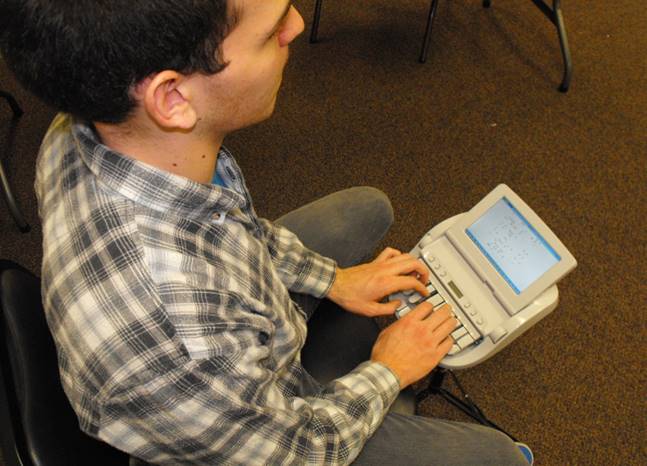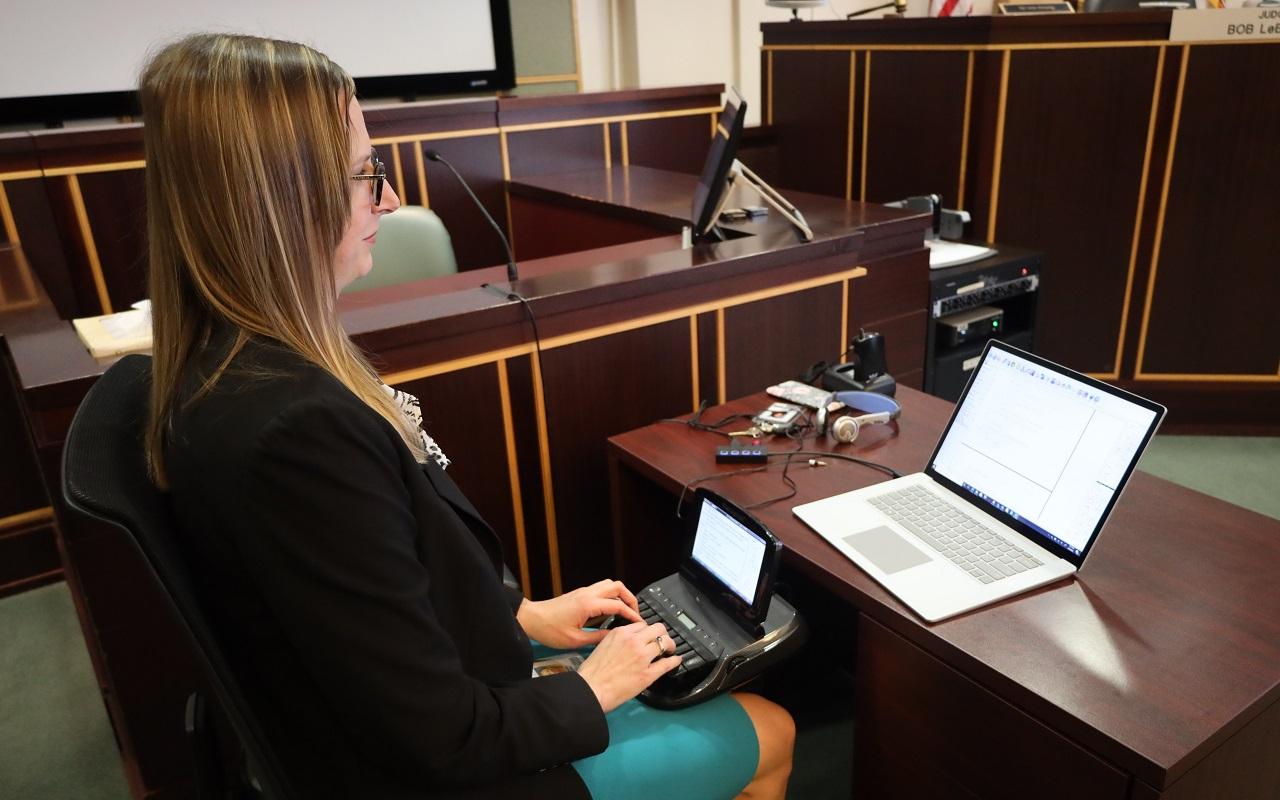Everything About Court Reporting: Essential Insights for Legal Professionals
Court reporting offers as a crucial element of the legal system, ensuring that procedures are precisely documented. As innovation developments, the functions and tools of stenotype reporter are progressing. This change calls for attorneys to adjust to new techniques and technologies. Understanding the details of court reporting can substantially impact instance results. What essential insights should attorneys realize to navigate this transforming landscape effectively?
The Duty of Court Reporters in Legal Proceedings
Court press reporters work as the essential voice of the courtroom, catching every talked word throughout lawful proceedings with accuracy and precision. They record testimonies, legal debates, and judges' rulings, making sure that a full record is preserved. This documents is vital for allures, providing a clear account of what transpired throughout tests and hearings. Stenotype reporter must possess remarkable paying attention skills and an extensive understanding of lawful terms to promote precise coverage. They typically work under stress, needing focus and rate to keep rate with the discussion. Their transcripts act as main documents, which can be referenced long after the proceedings conclude. In addition to their transcription tasks, court press reporters might additionally give real-time coverage, allowing courts and lawyers prompt accessibility to the talked word. Generally, their duty is vital in upholding the honesty and openness of the judicial procedure, adding significantly to the legal profession.

Modern Technology Transforming Court Coverage
As technology developments, the landscape of court reporting is undertaking a considerable makeover, improving the performance and accuracy of legal documents. Digital devices such as real-time transcription software make it possible for court press reporters to provide prompt text outcome during process, enabling lawyers to gain access to information instantly. Remote coverage capabilities have emerged, assisting in involvement from numerous locations through protected video conferencing platforms.
Man-made intelligence is also making strides, with formulas with the ability of helping in transcription processes and guaranteeing higher accuracy in capturing talked discussion. Additionally, cloud storage space solutions offer protected access to instance files, improving partnership between lawyers and stenotype reporter.

These technical technologies not only improve operations but also lower the capacity for human error, ultimately adding to a much more reliable lawful system. The combination of sophisticated innovation right into court coverage is establishing new criteria for accuracy and efficiency in lawful paperwork, reflecting the advancing needs of the occupation.
Best Practices for Working Together With Court Reporters
Effective partnership with court press reporters is important for assuring precise and prompt lawful paperwork. Lawyers ought to launch communication early, providing reporters with relevant instance details, consisting of names, dates, and certain terminology. This foundational information allows press reporters to prepare successfully, lowering the chance of errors.
Furthermore, maintaining open lines of communication throughout process promotes an effective atmosphere. Lawyers ought to motivate stenotype reporter to ask questions or seek information when required. This technique not just boosts precision yet additionally reinforces the working connection.
Assessing records without delay is essential. Attorneys ought to offer constructive feedback to press reporters, highlighting any discrepancies or locations for enhancement. This collective method assists reporters improve their abilities and assurances future work fulfills the needed standards.
Finally, respecting target dates and acknowledging the reporters' competence add to a positive and effective cooperation, eventually profiting the whole legal procedure.
Recognizing Different Kinds Of Court Coverage Providers
Different kinds of court reporting solutions satisfy various legal needs, each offering one-of-a-kind advantages and functionalities (durham court reporting). Typical stenographic coverage is the most typical approach, utilizing a clerk who transcribes talked words into composed message during court procedures. This solution provides real-time transcripts, enabling immediate accessibility to process
An additional alternative is digital reporting, which uses audio recording innovation along with transcription services. This technique can be extra affordable and serves for catching prolonged sessions where verbatim message is not instantly needed.
In addition, some services specialize in remote or online reporting, suiting scenarios where individuals can not be literally existing.
Last But Not Least, CART (Communication Gain Access To Realtime Translation) services provide real-time transcription for individuals with hearing disabilities, making certain access throughout lawful process. Each sort of court reporting solution plays a crucial role in the legal procedure, boosting interaction and documents.
The Future of Court Reporting in the Legal Industry
While advancements in modern technology remain to reshape several industries, the future of court coverage in the lawful industry is poised for considerable transformation. durham court reporting. The boosting integration of man-made intelligence and automatic transcription solutions is expected to improve efficiency and accuracy in court coverage. These tools can enhance the documents procedure, making it possible for lawyers to concentrate on even more facility jobs
Remote try this web-site court reporting has gotten grip, specifically in action to the COVID-19 pandemic. Digital hearings and depositions are likely to end up being commonplace, demanding court reporters to adjust to new technologies and systems.
As the demand for real-time reporting and immediate access to transcripts expands, stenotype reporter will require to sharpen their skills in digital literacy and information management - durham court reporting. The advancing landscape presents both tests and opportunities, inevitably redefining the role of stenotype reporter within the legal industry. Welcoming these modifications will be vital for maintaining significance and supplying quality service
Frequently Asked Questions
What Certifications Do Court Reporters Required to Exercise Expertly?
Court reporters typically require a secondary school diploma, specialized training in court coverage, and accreditation. Effectiveness in stenography or voice writing, along with strong useful reference language skills, is important for precise transcription in legal setups.

Just How Much Do Court Reporting Solutions Usually Expense?
Court reporting solutions typically cost in between $100 to $300 per hour, relying on factors such as experience, location, and intricacy of the situation. Additional fees might get transcription and expedited solutions.
Can Court Reporters Work in Non-Legal Settings?
Yes, stenotype reporter can operate in non-legal setups, such as closed captioning for tv, transcription services for meetings, and creating captions for videos. Their skills in accurate documentation are important in numerous sectors.
What Is the Average Turnaround Time for Records?
The ordinary turn-around time for transcripts commonly ranges from 1 day to a week, depending on elements such as the length of the process, intricacy, and the stenotype reporter's work. Timeliness is vital in lawful settings.
Do Court Reporters Supply Providers in Numerous Languages?
Stenotype reporter can offer services in multiple languages, relying on their certifications and knowledge. Several are trained to transcribe have a peek at this site in various languages, enhancing ease of access and ensuring accurate paperwork in diverse legal procedures throughout various etymological histories.
Court reporters serve as the essential voice of the court, recording every spoken word throughout lawful proceedings with accuracy and precision. Court press reporters have to possess remarkable paying attention abilities and a detailed understanding of legal terms to assist in accurate reporting. Digital tools such as real-time transcription software program make it possible for court press reporters to deliver immediate message outcome throughout procedures, enabling legal experts to access details immediately. Different kinds of court coverage services provide to various legal requirements, each offering one-of-a-kind advantages and performances. Court press reporters generally need a high school diploma, specialized training in court reporting, and certification.